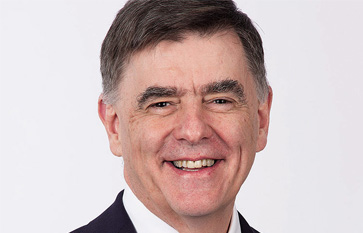RACMA Guide to Credentialing and Scope of Clinical Practice Processes
RACMA Fellows and Associate Fellows have key roles in clinical governance in our organisations. Their expertise in this area means that they are in a position to provide expert advice and leadership in all areas of clinical governance. One of the specific areas where such leadership is of significant importance to health service organisations is in the development, maintenance and improvement of processes that lead to appropriate credentialing and defining the scope of clinical practice of medical staff both within the health service organisation and for medical staff who may be affiliated with that organisation.
This practical guide (which was first published in 2015) has been developed and updated to ensure that all RACMA members have a consistent way of functioning as the guardian and that there is agreement about the factors that need to be considered in any process that is adopted. The guide has been developed to be complimentary to the guidelines provided by jurisdictions as those guides provide a regulatory framework for specific jurisdictions with less of the practical details of how to go about setting up processes, maintaining processes or making improvements.
This guide is aimed at providing RACMA members with a “how to” in relation to setting up appropriate processes, indicating how the processes can be monitored and by whom, what issues need to be considered in the processes of appropriate credentialing and defining scope of clinical practice and how these may be ascertained. The objective is that all of us as RACMA members will ensure that our systems provide a high level of safety in medical staff practice and support quality of clinical practice.
It is important that medical administrators ensure that there is a documented change in organisation policy from a governing body (e.g. your CEO, Board, Department, Government) which provides authorisation for any changes in your actions from usual practice.
Author: Maria Cerullo
5th September 2022
- How can I speed up credentialing of doctors from other health services to work in my health service?
-
Often the “usual” organisational processes for credentialing are onerous and lengthy. You should immediately review your processes to simplify and speed up the processes, whilst ensuring that issues around training and experience, competence, registration, referees and insurance are still addressed.
- Can I accept another health services credentialing of a doctor?
-
Yes. The practitioner’s credentials can be mutually recognised in other health services that do not belong to the group of hospitals where initial credentialing is carried out. This is acceptable if the applicant agrees that the information should be shared and if the second hospital has assured itself that the process of assessing credentials in the initial health service is robust and meets all the criteria of its own credentialing committee.
- What about extended scope of practice in place at another service?
-
This is allowable, providing your hospital/health service needs and can provide the services to support the extended scope of practice.
- Do I still need to follow up with reference checks?
-
Yes. There is still a responsibility to ensure that the doctor’s practice is still current and that they are competent (both professionally and mentally). These can be done rapidly by the medical administrator via telephone, with documentation of the outcome(s).
- Can I credential a doctor to work outside of their usual scope of practice?
-
es. The Medical Board of Australia provided guidance on this in their Update of 29 April 2020 in which they stated:
“The Board does not prescribe what individual medical practitioners can and cannot do. That is a decision for each practitioner and the organisation engaging them, prioritising patient safety.
Medical practitioners with general and specialist registration are not restricted in their scope because they have specialist registration. Specialist registration confirms that a medical practitioner has additional specialist qualifications, as well as the qualifications for general registration.
Hospitals and health services are responsible for ensuring that the practitioners staffing their services have the necessary qualifications, skills, training and experience to deliver safe care. Except for practitioners with restrictions on their registration (1), the Board will not be providing advice about who can practise in which positions. Local processes for credentialing and defining scope of practice are in place for this purpose. Among a range of issues, they will consider:
- the practitioner’s qualifications, skills, training and experience
- the transferability of skills to deliver safe care
- the conditions in which the practitioner will be working including facilities, supervision and training”
- Can I credential a doctor who offers to work but is not on the usual registers?
-
Any doctor involved in “practice” as defined in the RACMA Guide, must be registered with AHPRA / the Medical Board or the New Zealand Medical Council.
AHPRA and the Medical Board announced on 1April 2020 they will establish a new pandemic sub-register to fast tracking the return to the workforce of doctors who previously held general or specialist registration and who had left the Register of Practitioners or moved to non-practising registration in the past three years. This will be an opt-out register and doctors will be alerted that they have been added to the sub-register. Doctors can opt out at any time. APHRA intends the sub-register to be in place from 6 April 2020.
Employers still need to undertake probity checks (including contacting referees) and provide any needed induction and training. Professional indemnity insurance cover for doctor on the sub-register must be in place. Doctors must practise within their scope of practice and in accordance with the code of conduct. It should be remembered that vulnerable health care workers (i.e. aged over 65 years, or who have underlying medical conditions that place them at greater risk of severe complications from COVID-19) should be re-deployed, wherever possible, to clinical areas and duties that have reduced exposure to patients with confirmed or suspected COVID-19.
Reference: https://www.health.nsw.gov.au/Infectious/diseases/Pages/coronavirus-healthcare-staff.aspx




